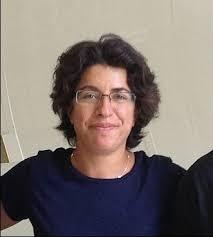event
Aerosol Source Characterization in an Urban/Agricultural/Desert Setting
Primary tabs
The School of Earth and Atmospheric Sciences Presents Dr. Roya Bahreini, University California Riverside
Aerosol Source Characterization in an Urban/Aricultural/Desert Setting
The Imperial Valley is the second largest agricultural region in California and is home to the Salton Sea, the largest endorheic lake west of the Mississippi. The Imperial County communities surrounding the Salton Sea suffer from extreme levels of air pollution, especially aerosol particles. This has led to negative health outcomes and low socioeconomic factors.
Due to the high input of agricultural runoffs in the lake over the past decades, its salinity has been increasing to twice as much as ocean water. Additionally, concentrations of selenium (Se) in the water and sediments are high and increasing. Recent water management practices in the region have led to a sharp decrease in the Salton Sea water levels, worsening its water quality, and exposing the playa along its shores.
Primary dust emissions from the recently exposed playa mobilize trace pollutants to the atmosphere and contribute to the region’s PM2.5 and PM10 (aerosols ≤ 2.5 mm and 10 mm in aerodynamic size, respectively) concentrations.
In this talk, I present results on mineral and ionic composition of suspended and depositing aerosols in Imperial Valley to determine sources of airborne dust particles and quantify the influence of the exposed playa vs. the local arid lands in controlling dust emissions.
I will also examine the spatial and temporal patterns of aerosol components using data from passive samplers deployed at five sites, spanning from the remote/background to urban and shoreline locations in IV. Enrichment factors and positive matrix factorization (PMF) results were used to identify and to estimate the contribution of various dust sources in the region. The PMF resolved the data from these samplers with seven factors, six of which have anthropogenic influences, contributing to 55-80% of the collected aerosol mass.
Additionally, we determined that playa emissions were most intense during late spring/early summer. Minerology of the collected samples during an intense dust event suggest that evaporite minerals of playa, particularly magnesium and sulfate, are important for playa emissivity. In our first study at the Salton Sea, we observed strong seasonal variations in Se concentrations with higher enrichments on fine aerosols, suggesting a seasonal cycle of Se volatilization from the playa and/or the sediments and formation of secondary aerosols through condensation.
I will conclude the seminar with results from our laboratory-based experiments examining the potential for atmospheric oxidation of organoselenium compounds to contribute to Se-enrichment in ambient aerosols.
Status
- Workflow Status:Published
- Created By:nlawson3
- Created:08/18/2020
- Modified By:nlawson3
- Modified:11/13/2020
Categories
Keywords
Target Audience

